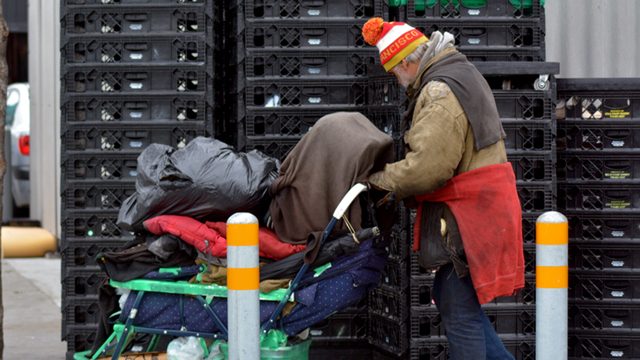SUMMARY
This is AI generated summarization, which may have errors. For context, always refer to the full article.

WASHINGTON, USA – More than a million Americans rose out of poverty last year but household incomes stagnated and – for the first time in 9 years – the share of people with no health insurance crept higher, officials reported Tuesday, September 10.
The annual snapshot offered a mixed portrait of prosperity in the year after United States Republicans slashed income taxes and as President Donald Trump moved to undermine the health insurance system created by his predecessor Barack Obama.
The numbers showed Americans are at last recouping painful losses from the Great Recession of 2007 to 2009, but improvements may have stalled.
Individual worker wages are up and poverty is down but, after 3 years of growth, households overall did not bring in higher incomes in 2018.
Meanwhile, government health coverage intended for the poorest Americans weakened, notably affecting large numbers of children.
With unemployment holding near historic lows and wages rising, Trump has hailed his economic agenda as a blessing for American workers even though data suggests his trade wars are weighing on growth.
Republicans in last year’s midterm elections faced angry waves of voters who denounced attempts to dismantle the health coverage system known as Obamacare.
Democrats seized on the report’s conclusions that coverage in public health care had shrunk.
“President Trump’s cruel health care sabotage has left two million more people without health insurance, forced to live in constant fear of an accident or injury that could spell financial ruin for their families,” Nancy Pelosi of California, speaker of the House of Representatives, said in a statement.
Health care is again a dominant issue among Democratic presidential candidates this year, with several calling for universal, state-run health coverage.
According to the Census Bureau, the poverty rate fell in 2018 to 11.8%, or 38.1 million people, down 0.5% from 2017.
As a result, for the first time in 11 years, poverty was significantly lower than 2007, the year before the Great Recession.
More kids without insurance
Officials define poverty on scale of income thresholds for individuals and families. In 2018, a family of 4 with two children and an income greater than $25,465 would not be considered poor.
The American south was the only region not to see declining poverty last year.
While American men continued to out-earn women, Trudi Renwick, a Census Bureau economist, told reporters that 2018 had been a “fairly good year for women,” noting that more had found full-time, year-round work and risen out of poverty than did men.
But median household incomes stood at $63,200, meaning that in statistical terms they were no higher than in 2007 or 1999, both years that immediately preceded recessions.
Incomes for households headed by Asian-Americans, when adjusted for inflation, rose, but were stagnant for non-Hispanic whites, blacks, and Hispanics, according to the Census Bureau.
Yawning wealth inequalities persisted but were largely unchanged from the prior year: the top 5% of earners took in 23.1% of all income on aggregate. More than half of all income went to the top 20%.
But the findings were most stinging on health insurance.
The share of Americans with no health coverage – which has fallen sharply since Obamacare took effect in 2013 – rose to 8.5%, up 0.5 percentage point over 2017.
The largest declines were under Medicaid – a government health insurance program intended for the poorest Americans that has been central to extending Obamacare benefits.
Trump, who failed in an effort to push through legislation that would have gutted Obamacare, has since cut enrollment, advertising, and outreach programs.
The share of children without coverage rose, as it did for adults between the ages of 35 to 64. There were also notable increases in the uninsured rate for Hispanics of any race.
The Census Bureau found no apparent decline in the health coverage that Americans receive through their employers, which is how most are insured. – Rappler.com
Add a comment
How does this make you feel?
There are no comments yet. Add your comment to start the conversation.